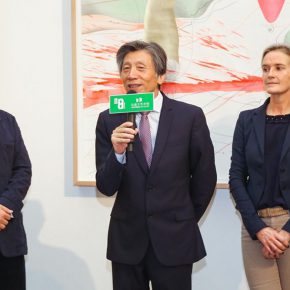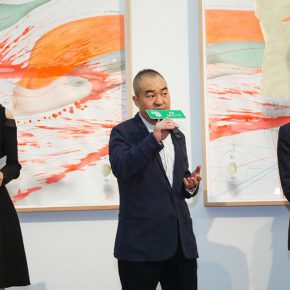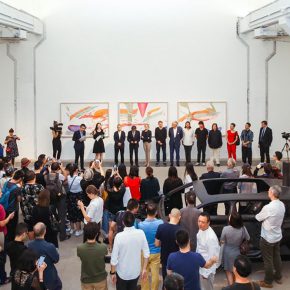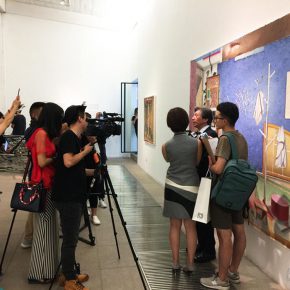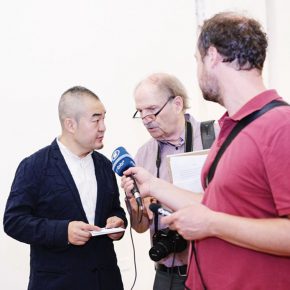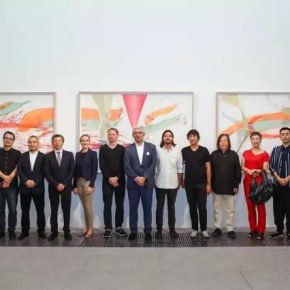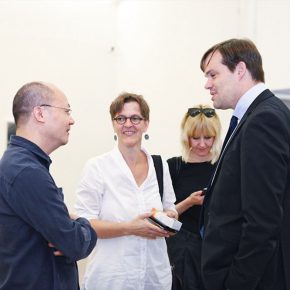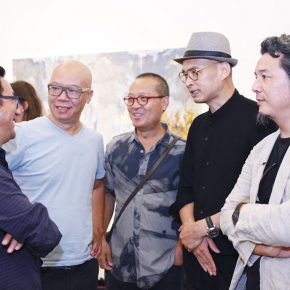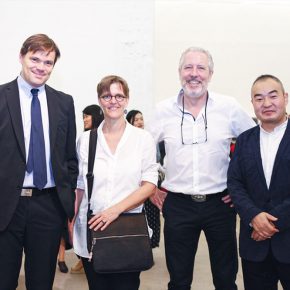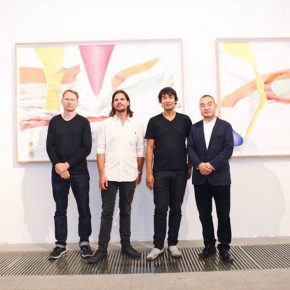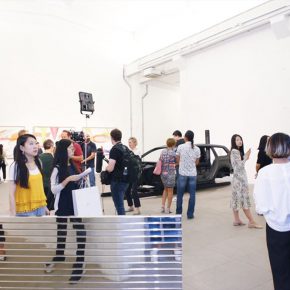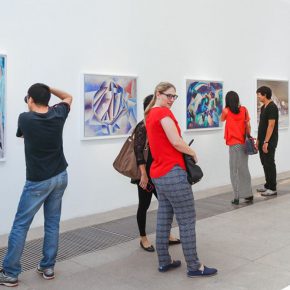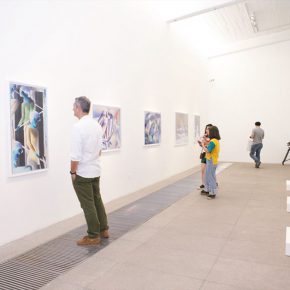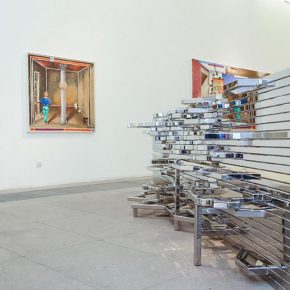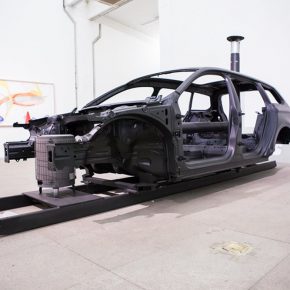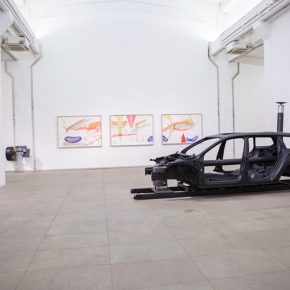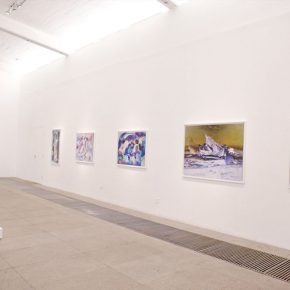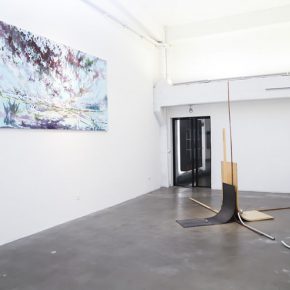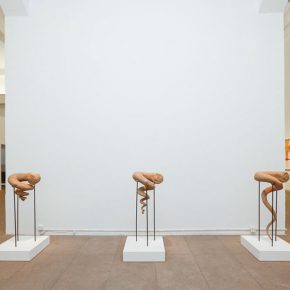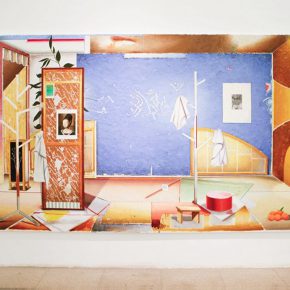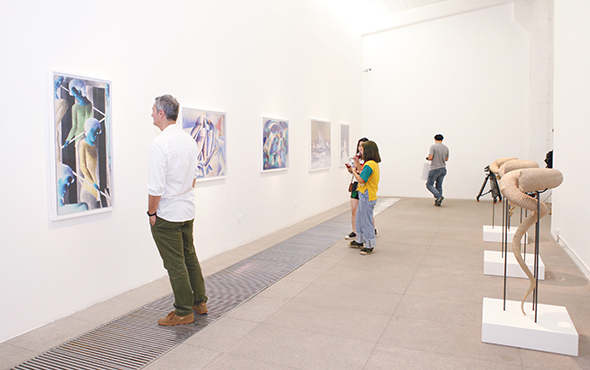
At 11:00 on September 15, 2017, jointly curated by Prof. Fan Di’an, President of the Central Academy of Fine Arts, and Prof. Dr. Walter Smerling, Chairman of the Stiftung für Kunst und Kultur e.V, “Next Generation: Young German Art” which is the first show of “Deutschland 8: Deutsche Kunst in China” opened at Whitebox Art Center, and the first show focuses on young German art, with Sun Yongzeng, Director of the Whitebox Art Center serving as the curator.
“Deutschland 8: Deutsche Kunst in China”, is an important exhibition in the cultural program for the 45th anniversary of the establishment of diplomatic relations between China and Germany, and returning salute to the “China 8 – Contemporary Art from China on the Rhine and Ruhr”. After more than two years of preparation, the project finally debuted for the Chinese audiences in the autumn of 2017, which is lasted for more than a month to build a city gallery for Beijing so that people can fully understand the post-war German contemporary art. After the end of the war in the 20th century, Germany has established fruitful achievements in all aspects of culture and art, and this exhibition shows contemporary art as a universal visual language that contains the cross-cultural and cross-regional communication transcendence, and also created a new mode and pattern for culture and social communication between countries.
The exhibition has a significant meaning of the word ‘sample’, 21 selected works of 6 contemporary artists from the representatives of the younger generation of German artists, covering a variety of media and forms such as painting, photography, installation. These works are rooted in the global vision and adventurous spirit to experiment with contemporary art in the age of an infinite amount of information today, while integrating their critiques and reflections on history and in reality in their contemporary art practices. They are all young German artists who are very active in Germany, and the new generation of artists influenced by the comprehensive and in-depth academic achievements of the post-war German art, representing contemporary art which is experimental and developmental in Germany.
The installation of Alicja Kwade and Michael Sailstorfer, photographs of Sebastian Riemer, and the paintings of David Schnell, Jorinde Voigt and Matthias Weischer allow us to see their use of the deep historical and artistic resources of Germany. They are keen to express the inner world reflected by the material of life and natural phenomenon, and emphasize the form of art, for both the social conceptual art established by Joseph Beuys, and the German New-Expressionism that is in pursuit of spiritual exploration, as well as the New Leipzig School that adheres to a combination of painting and reality, their works perform a variety of cognitions and experiences, so that the performance of emotions, colors, lines, strokes are full of charm.
Artists with the help of the familiarity of materials and the impression of things offer an interpretation of the inner true art, so that individual emotions are extremely released and free. They are concerned about social reality, respecting tradition while breaking the tradition, to seek a new breakthrough in art, while choosing the material and techniques which are the most suitable for the performance. Through this exhibition, we feel the art that is happening and changing in Germany, with the new artistic ideas and methods, the advancement of visual language, the expression of inner feelings and spirits, so that the audience can receive the experiences of the presence and synchronicity.
“The exhibition chooses to display the works of German young artists in the Whitebox Art Center in 798 Art Zone, which is one of the main places to showcase contemporary Chinese art, while the works are placed in the former factory space with a Bauhaus style, built by East Germany, so it makes a significance in correspondence and dialogue. Director Sun Yongzeng told the journalist of the CAFA ART INFO that this generation of German young artists inherited the post-war history and reality, the reason and rigorousness of contemporary way of thinking, and the accuracy of the use of the language of art which were good reference points for Chinese young artists.
The honored guest of the opening ceremony Li Di, who once studied abroad in Germany said that, “there are also a few exhibitors who were also students when I studied abroad in Germany, and they are basically representatives of the most active 40-year-old German artists, including representatives of the New Leipzig School, whose works have been published and exhibited in many places in Germany, so that, the exhibition is cordial for me. For many Chinese audiences, Deutschland 8 presents a total of seven exhibitions, which is an important chance to systematically understand the German contemporary art.”
It remains on view till October 31.
Text by Zhu Li, translated by Chen Peihua and edited by Sue/CAFA ART INFO
Photo by the organizer


